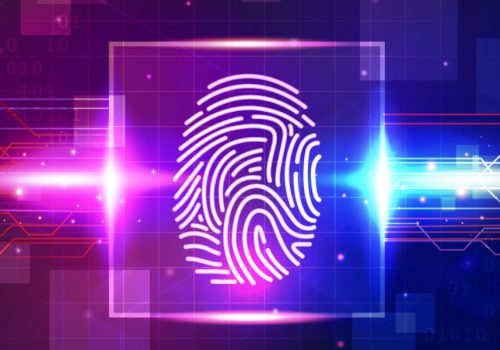Looking back at the early days of modern higher education, the concept of establishing universities was a long process. The likes of Bologna University may have started in 1088, but it took up to 100 years for the oldest continuously functioning university in the world to develop sufficient programmatic formalization and instructional capacities to justify its chartered designation in the first place.
Then, it took another 50 years for the first woman in history to obtain a university degree there, and consequently the first woman to become a university professor. The march of “firsts” is nothing new for the academic world, yet unlike startling discoveries and improvements in the quality of life they have gifted to humanity, it now faces one of the most interesting and revolutionary challenges yet: the digital transformation.
While this process has received traction in the recent decades, the human society – in a perfect analogy with a living organism – when placed under the systematic exposure to information technology over several decades, and the COVID-19 pandemic, is poised to revolutionize and adapt to a new era of its manifestation: the digital identity and the distance-operating society.
For all its challenges, this revolution has its merits as well: at no point in history has education been more universally available to people. Few cultural, political, or economic barriers now stand in the way of people seeking information and knowledge, though a careful tone should be set when it comes to information truthfulness and reliability.
However, it is an undeniable fact that as people depend more and more on technology and the internet as sources of information, higher education institutions need to see beyond traditionalism and not just follow the digitalization trend, but pioneer it, because it is their prerogative to set a standard that all other sectors ought to follow.
True to the academic spirit, there may very well be a path that higher education institutions can follow in their pursuit of digitalization. It includes them beginning by transforming their organizational culture; shifting the focus towards individualized student experience; acquiring all technological tools to ensure a seamless transition; providing institution-wide training and development sessions for all employees; becoming a true learning organization; and developing a sustainable digitalization strategy. Let’s take a closer look at each of these steps.
Cultural transformation
There can never be a true transformation if the organization itself does not believe in it. No matter what type of institution it is, be it one with a long-standing tradition that dates centuries, or new emerging born-digitals, universities need to understand that digital change is inevitable first and foremost, and, by all accounts, a chance to innovate. Unless this urge to embrace digitalization as a change is championed through the organization by its leaders, and rooted in the organization’s culture, there is no technology or human capital investment that can make it work.
In most cases, this means breaking with tradition of essentially what a class is and what a professor does, and ultimately how a learning environment is controlled by the institution (side note: there is no possibility to fully control the learning environment in a digitalized world). By understanding the changing role of education in the first place, institutions can aspire to promote an organizational culture where people seek technology as a means to become a better version of themselves, and by doing so, contribute to a more efficient institution.

Student-centrism
After instituting cultural change throughout an organization, it is imperative that institutions understand that their academic offers now compete in a global marketplace. This creates two very important implications: first, there is an opportunity to recruit students with great potential irrespective of physical distance, and second, students have access to an ever increasing roster of (de)centralized study program offers. From either perspective, in order to be able to leverage the digital opportunity, higher education institutions need to shift the batch mentality of standardized study experiences for entire student cohorts. Having the reach of technology at their fingertips, students’ commitment to education is no longer a mutually exclusive task: they can simultaneously work, travel, and learn. Thus, institutions need to tailor their digital experience so that each student is exposed to equal treatment no matter their physical presence, and such system does not discriminate when it comes to students’ previous experiences. Flexibility is key when planning for digitalizing higher education institutions: students want both flexibility and a sense of belonging.
Technology appropriation
In many people’s minds, technological capacities is what digitalization is all about. Without establishing a competent infrastructure, all the efforts an institution puts in digitalization will be nothing but an idea. Alas, technology alone will not be sufficient for digital transformation – there are innumerable cases when organizations have appropriated state-of-the-art technology, but no one used it – either out of resisting change, fear that technology will replace jobs (more on this in the next step), employee complacency, or lack of an organizational culture to embrace change and technology.
Thus, after having the appropriate culture in place and understanding the changing role of students in the new educational landscape, the integrated student information systems should replicate all academic and administrative venues and services, online. A true system would make it irrelevant for students to visit the campus at all (though they could, if they chose to do so), as they can follow the lectures live, be assigned different tasks and deliver assignments, take exams and get evaluated, as well as hold seminars, office hours and more, all from the comfort of their homes.
It should be noted though, that as distance learning is becoming the norm rather than the exception, there is an ever evolving concern about how institutions emulate controls (exam supervision, class attentiveness, student behavior, complaints, etc.), though the technology is improving to make these issues obsolete (PECB Exams platform, for instance).
Workforce adaptation
As discussed, having the technology when no one uses results in an expensive impasse. While transforming the culture is a major first step, employees need to understand the need for digital study experience, how their roles will be adjusted and adopted in the new face of the institution, and most importantly, attain comprehensive training to develop the skills to handle themselves. In this aspect, awareness is key: when people know where they belong, they understand that the technology is there to make everyone’s lives easier rather than threaten them with loss of jobs.
Be a learning organization
No institution better emphasizes the importance of lifelong learning than the (higher) education ones. While all the previous steps prepare an institution to successfully transform to a digital environment, higher education institutions should stay ahead of (or even lead) future trends in order to stay relevant. Technology and innovation are never a final destination, so institutions should always stay alert to adopt new trends, develop new methods, and adjust their offerings for the needs of the labor market on a dynamic basis.
Digitalization strategy
This step is all about ensuring sustainability. Transforming one of the most traditional industries in the world requires a lot of effort and identity redefinition for institutions. The digital transformation should not be only a tool for survival, but rather a synergy for improvement. In this spirit, organizations should define policies and guidelines that steer the institution and its employees to carefully plan for future change, identify areas for improvement, and ultimately champion its implementation and development.
This roadmap is not a one-size-fits-all formula, as higher education institutions worldwide have radical differences in terms of what study programs they offer (more difficult for programs of clinical nature, laboratory-based ones, or trades in general), their current digital infrastructure, support (or lack thereof) of their respective accreditation/ licensure bodies in this regard, or overall student body literacy and keenness to adjust to a digitalized study environment. These variables may affect the timeline when this transformation would be successfully implemented, but as we have established so far, this effort is the only way forward if higher education institutions seek to remain relevant in a world that is changing as you are reading this article.









